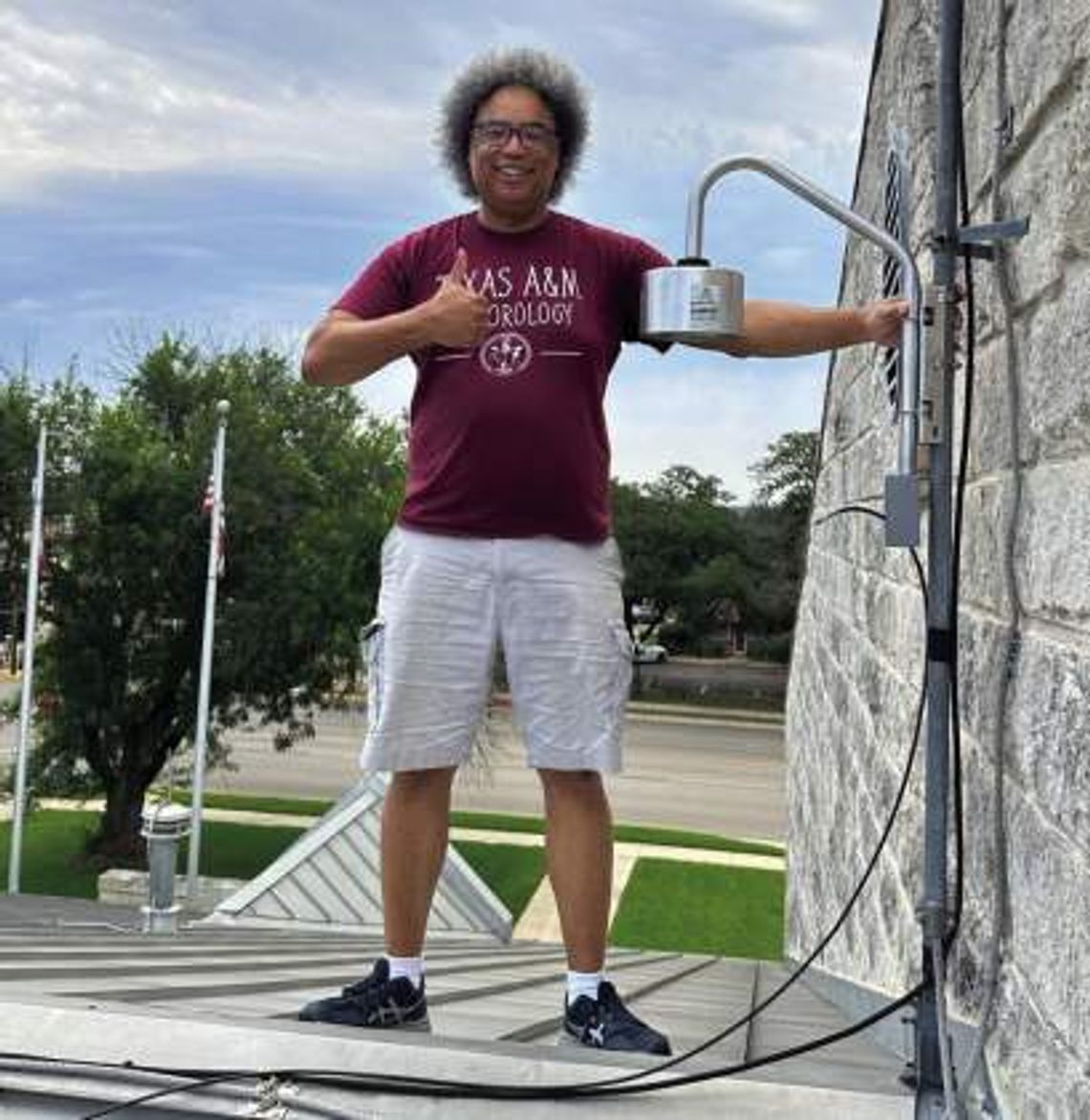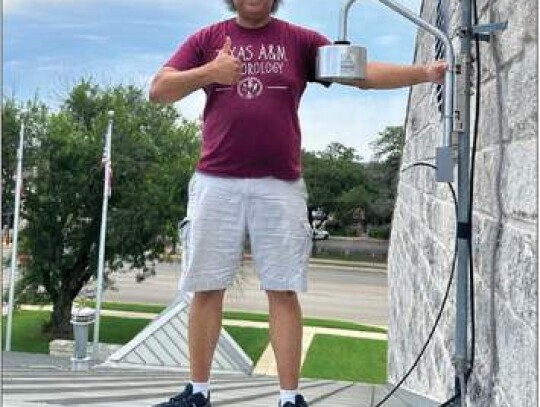When the next volatile storm front rolls through Kendall County, Sam McGee and the Boerne Fire Department won’t have to cast their eyes to the skies to track lightning strikes.
Thanks to McGee, the city received a Boltek Lightning Detection System that was recently installed at the Boerne Fire Station -- a gift from Tim Logan, an assistant professor in the Department of Atmospheric Sciences at Texas A&M University who is the director of the Houston Lightning Mapping Array (HLMA) Network.
A chance encounter on the A&M campus several years ago led to the city receiving the $10,000 piece of equipment used to alert about nearby thunderstorms and to detect high electric-field conditions which precede a first lightning strike.
McGee, a Little League baseball coach, crossed paths, literally, with Logan while on a weekend trip to College Station with his son. McGee and Logan quickly discovered they share a passion for weather, particularly thunder and lightning.
“I told how our athletic fields in Boerne do not have lightning warning systems,” McGee said. While the city’s athletic fields have lightning protocols for safety, “we don’t have anything like that on our Little League parks if a fast-moving storm with lightning rolls in.”
McGee, CEO of Crestmont Private Wealth in Boerne, is also a Boerne volunteer firefighter. Having kept in touch with Logan over the years, a deal was made whereby Logan could mount the Boltek Lightning Detection System at the Boerne fire station and receive a constant data feed from its network.
McGee and Logan met with officials from the fire department, the Kendall County sheriff and fire marshal, city of Boerne EMS director ,and city officials. Logan gave a presentation of how the lightning detection system works.
McGee said the Boltek sensor field mill “detects the electromagnetic field 30 miles from the center. It’s really sensitive, too. “Boerne Fire is really enthusiastic about it. We can see when a bolt happens, before it happens,” he added.
The detection system – one of only two in the state -- was installed June 22 on the roof of the fire station.
“The day we installed it, it was already active. There was a pretty good (storm) cell out there,” Mcgee said.
Information gathered from pertinent weather events and lightning strikes will be gathered over the next 12 months to produce concise, full-proof data.
He said the biggest benefits from installation of the detection system are public safety and protection of first responders.
“It’s all about public safety, finding uses for awareness and public education. It’s an interesting, unique instrument,” he said. “It’s about protecting our firefighters as well.”
He addressed one of the more common misconceptions about lightning and urged people to be vigilant and alert to the arrival of storm fronts that could pack a lightning wallop.
“I think the biggest piece will be public education. There's a lot of misunderstanding about lightning, when you’re safe or not safe.”
'One big misconception,” he said, “is that lightning needs to be right above you. Lightning can strike up to 25 miles, cloud to ground.
“But this will help save lives,” he said. “And that’s what’s most important to me.”









Comment
Comments